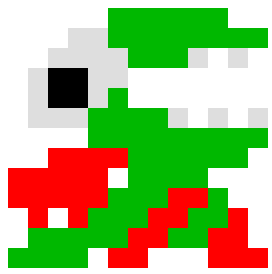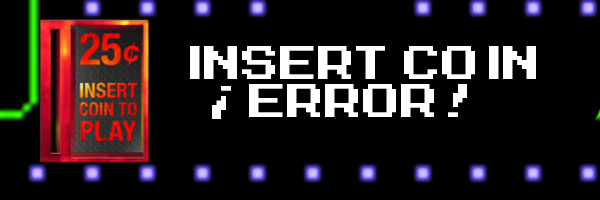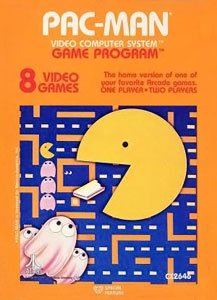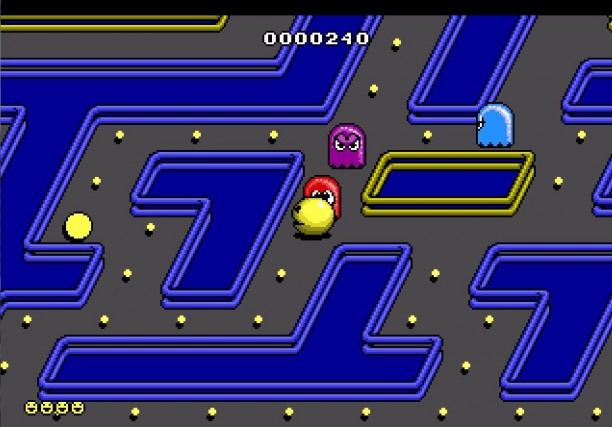
GMZ
GMZ #2-9 – Pac-Man and Extinction
Dig Dug Charged with Directly Causing the Extinction of Several Galapagos Species and Worse
By P. Watson

After years of pressure by groups like Greenpeace, PeTA, various other groups, and hundreds of politicians from around the world, Dig Dug has been charged with causing the extinction of several species found only in the Galapagos Islands, as well as completely eradicating several of the islands themselves.
It doesn’t look good for Dig dug either. A quick Youtube search reveals hours of video clearly showing him murdering two species that have been recently declared extinct, a type of lizard known as Fygars and small rodents called Pookas. Some of these videos were taken as far back as the early 80s, while others seem to have been shot very recently.
It’s the same thing with the accusations of the destruction of entire islands. Youtube has hundreds of videos practically in compilation form of Mr. Dug sinking island after island into the sea.
No date has been set for the trial. Namco has refused to comment on the allegations.
Insert Coin Error: The Pac-Man Story (Part 2)
By L. Mac
August, 1985. A year since Pac-Man’s last game hit arcades, the money is dried up and Pac-Man is looking for a way back to the top of the industry. “Ms. Pac-Man” had sustained the star for another year, and even cemented him into the American arcade scene (as the game had been developed by Bally-Midway, as licensees from Namco). Since then, though, Pac had fallen on hard times.
A port of the game for the Atari 2600 had fatally flopped, even partially sharing the blame for Atari’s rapid descent into infamy. Damaging Pac-Man’s reputation, the 2600 port, despite surging sales early on, had lost money for Atari, Namco, and Pac-Man personally. The public, betrayed, no longer trusted Pac-Man. In a late-1981 interview, Pac-Man gave a statement naming the then-upcoming 2600 port as a “revolutionary masterpiece”, a game that would “blow other games out of the water”. Many saw this, upon release of the game, to be evidence of Pac-Man’s growing corporate allegiance and self-serving attitude: willing to sacrifice players for personal gain.
“How was I supposed to know the game would suck?” Pac-Man related to GMZ reporter Greg Fitz. “I gave that interview in November! They didn’t even start developing that game till December! I didn’t know what it would be like, I just knew it had my name on it, and Atari’s logo, so I figured they would do a good job. It isn’t my fault they screwed the pooch.”
In 1984, Pac-Man had released another arcade game: Pac-Land. A departure from his previous games, the cabinet was a mild success among the arcade crowd, but there was a growing problem: the arcades were emptying out. People were leaving. In Japan, an underdog in the video game industry, Nintendo, had come out swinging, creating a video game home console that blew the 2600 out of the water: the Famicom. Pac-Man’s first game had been ported to the system, but was not fairing well in sales, likely due to Pac’s bad reputation.
By 1985, the arcade crowds were dwindling still. Pac-Man was living meagerly. The NES would be coming to America this holiday season, and Pac-Man had no way onto the gravy train. He was speaking to Namco, and they had some idea on the horizon for another arcade title, which didn’t supply Pac-Man with much hope. It involved some pseudo-three-dimensional gimmick. Maybe like the old comic books, Pac-Man surmised to himself, like Tales of Horror and Showcase! did in the 70’s.
Pac-Mania arrived in 1987, in an isometric 3D format, failing to overwhelm audiences. The numbers still dropping, Pac-Man retired. His contract still required him another two games as star, but Pac-Man didn’t think the studio would be knocking on his door any time soon. Returning to Cleveland, Pac-Man became a server at a local diner, eventually working his way up to manager over two years. He lived a respectable life, till, in 1992, ghosts came knocking on his door.
“I wake up at 3 AM, some asshole banging on my front door. I open the door, and there are two Namco suits at my door with briefcases. I knew my contract, I just didn’t think they’d actually come for me. Without question, I went back to my room, packed a suit case, and flew off to Japan.”
The resulting game, Pac-Attack, was a moderate puzzle success. Pac-Man was engrossed, yet again, in the video game scene. This ended quickly, however, as Pac-Man discovered the premise for his last game under contract.
“They fucking shoot at me! The kids are supposed to shoot at me! What the hell!”
Next week, we discuss Pac-Man’s post-slump turn, and the new generation of stars influenced by the legend.




